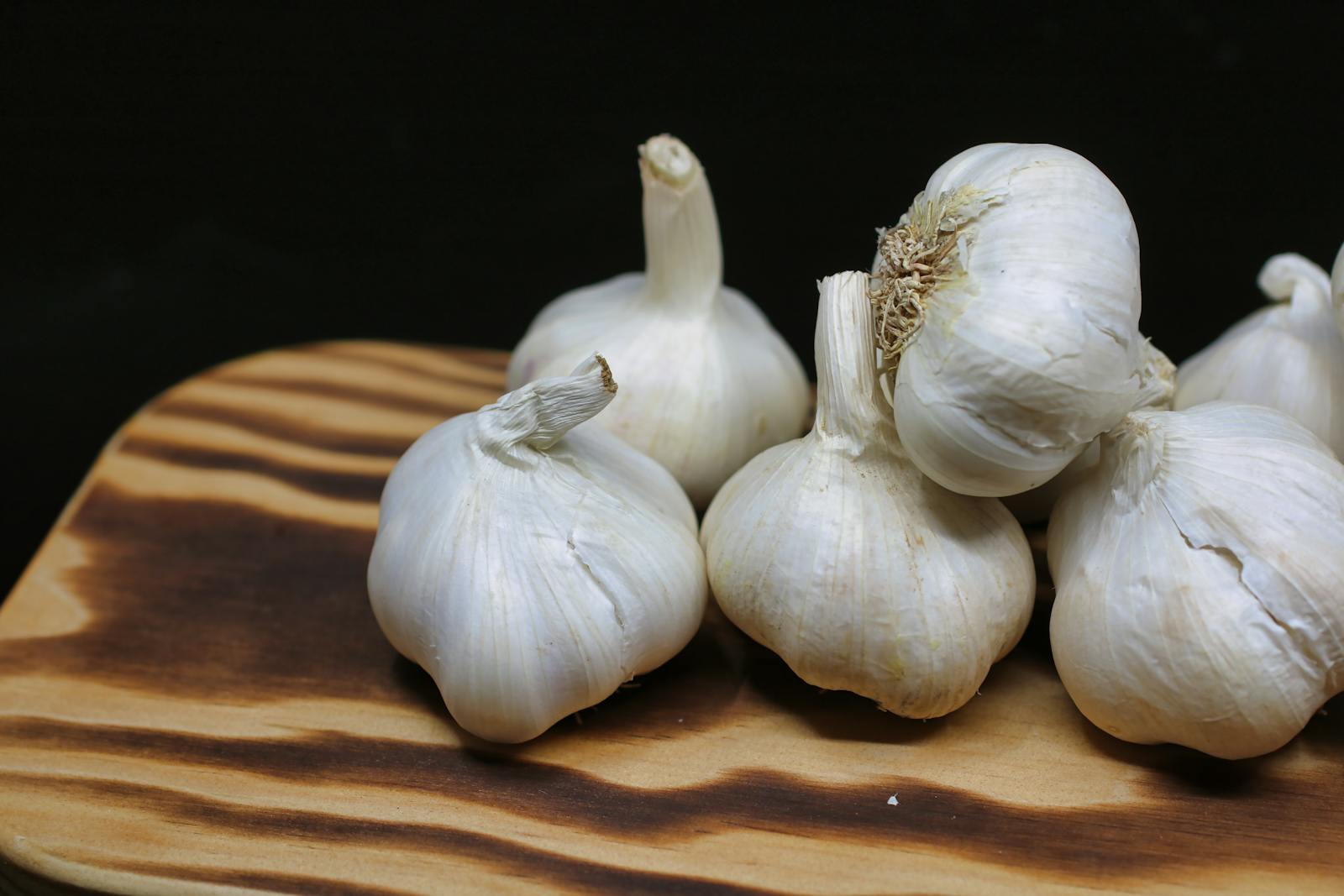Garlic is an essential ingredient in many cuisines worldwide. It has a pungent smell and a unique flavor that adds depth and complexity to any dish. But garlic is not just a flavoring agent; it has numerous health benefits as well. In this article, we will explore the versatility of garlic and its various health benefits.
The Magic of Garlic
Garlic has been used for centuries as a medicinal herb due to its many health benefits. The active compound in garlic, allicin, is responsible for its medicinal properties. Allicin is a sulfur compound that gives garlic its pungent smell and unique flavor.
Garlic is a rich source of vitamins and minerals. It contains vitamin C, vitamin B6, selenium, and manganese. It also contains small amounts of calcium, copper, potassium, phosphorus, iron, and vitamin B1.
Garlic is a widely used ingredient in cuisines around the world. While there are many different varieties of garlic, they can generally be grouped into two categories: hardneck garlic and softneck garlic.

Types of Garlic
Hardneck Garlic
Hardneck garlic, also known as stiffneck garlic, is named for its woody stem that grows up through the center of the bulb. Hardneck garlic has a bold, complex flavor and is often preferred by gourmet chefs for its distinct taste.
Hardneck garlic varieties include:
1. Rocambole Garlic
Rocambole garlic is a hardneck variety that is prized for its rich, full flavor. It has a brownish-purple bulb and typically has 6-10 cloves per bulb. Rocambole garlic is known for its easy-to-peel cloves, which makes it a popular choice for cooking.
2. Porcelain Garlic
Porcelain garlic is another hardneck variety that is known for its large, white bulbs and easy-to-peel cloves. Porcelain garlic has a mild, sweet flavor and is often used in dishes where a more delicate garlic flavor is desired.
3. Purple Stripe Garlic
Purple Stripe garlic is a hardneck variety that has a distinct purple stripe on the outside of its bulb. It has a strong, spicy flavor and is often used in Mediterranean and Middle Eastern cuisine.
Softneck Garlic
Softneck garlic, also known as artichoke garlic, is named for its soft stem that is easy to braid. Softneck garlic has a mild, sweet flavor and is often used in dishes where a more subtle garlic flavor is desired.
Softneck garlic varieties include:
1. Silverskin Garlic
Silverskin garlic is a softneck variety that is often used for pickling. It has a white bulb and typically has 10-20 cloves per bulb. Silverskin garlic has a mild, sweet flavor and is often used in dishes where a subtle garlic flavor is desired.
2. Artichoke Garlic
Artichoke garlic is another softneck variety that is known for its large, plump bulbs. It has a mild, sweet flavor and is often used in Italian cuisine. Artichoke garlic is also commonly used for garlic braids, which are decorative and functional.
3. Creole Garlic
Creole garlic is a softneck variety that is grown in the southern United States. It has a white bulb and typically has 8-12 cloves per bulb. Creole garlic has a mild, sweet flavor and is often used in Cajun and Creole cuisine.
Garlic in Cooking
Garlic is a versatile ingredient that can be used in various forms – raw, cooked, roasted, or pickled. It can be chopped, minced, sliced, crushed, or grated. Garlic is used in various cuisines worldwide, such as Italian, Chinese, Indian, and Mexican.
Garlic adds a unique flavor to soups, stews, pasta dishes, and curries. It is also used in marinades, dressings, and sauces. Garlic is a vital ingredient in many meat and vegetable dishes. Roasted garlic is delicious when served on bread or as a dip.
How To Grow Garlic at home garden
Garlic is a flavorful and nutritious addition to many dishes, and growing it in your home garden is easier than you might think. Here’s how to grow garlic at home:
Choosing and Preparing the Soil:
- Choose a sunny spot: Garlic prefers a sunny spot with well-drained soil.
- Prepare the soil: Loosen the soil to a depth of 12 inches, and mix in organic matter such as compost or aged manure.
- Check the pH level: Garlic grows best in soil with a pH level between 6.0 and 7.0. You can check your soil’s pH level using a soil testing kit.
Planting Garlic:
- Select your garlic cloves: Choose firm, healthy garlic bulbs and separate the cloves.
- Plant the cloves: Plant the cloves 2-3 inches deep, pointed end up, and 6 inches apart. Cover with soil and water well.
- Mulch: Apply a layer of mulch, such as straw or dried leaves, to help retain moisture and keep the soil cool.
Caring for Garlic:
- Watering: Garlic needs consistent moisture, especially during the growing season. Water regularly, but avoid overwatering.
- Fertilizing: Garlic benefits from a balanced fertilizer, such as 10-10-10, applied once a month during the growing season.
- Pruning: Remove any scapes that emerge from the garlic plants. These are the curly, green shoots that will produce flowers, which can reduce bulb growth.
- Harvesting: Harvest the garlic bulbs when the lower leaves turn yellow and begin to dry out. Gently dig up the bulbs and allow them to cure in a warm, dry place for several weeks.

How to Store Garlic
Here are some tips on how to store garlic to keep it fresh:
1. Store in a cool, dry place
Garlic should be stored in a cool, dry place away from direct sunlight. A pantry or cupboard is a good place to store garlic.
2. Keep garlic bulbs intact
Garlic bulbs should be kept intact until ready to use. Breaking up the bulbs can cause the cloves to dry out and go bad faster.
3. Don’t store in plastic bags or containers
Garlic should not be stored in plastic bags or containers, as they can trap moisture and cause the garlic to go bad. Instead, store garlic in a paper or mesh bag, or a breathable container.
4. Don’t store it in the refrigerator
Garlic should not be stored in the refrigerator, as the cold and moisture can cause it to sprout or go bad faster.
5. Use within a reasonable amount of time
Garlic should be used within a reasonable amount of time, usually within a few weeks. Old garlic can become dry and bitter.
How to Prepare Garlic Pickle
Garlic pickle is a delicious and easy-to-make condiment that adds a tangy, spicy kick to any meal. Here’s how to prepare garlic pickles at home:
Ingredients:
- 500 grams of fresh garlic cloves, peeled
- 1/4 cup of mustard oil
- 1/4 cup of white vinegar
- 1 teaspoon of salt
- 1 teaspoon of turmeric powder
- 1 teaspoon of red chili powder
- 1 teaspoon of mustard seeds
- 1 teaspoon of cumin seeds
Directions:
- Wash the garlic cloves and let them dry completely.
- Heat the mustard oil in a pan over medium heat.
- Add the mustard seeds and cumin seeds to the oil and fry until they start to crackle.
- Add the garlic cloves to the pan and fry them for 2-3 minutes, stirring occasionally.
- Add the turmeric powder, red chili powder, and salt to the pan and mix well.
- Add the white vinegar to the pan and mix well.
- Turn off the heat and let the mixture cool down.
- Transfer the mixture to an airtight jar and keep it in a cool, dry place.
- After a day, give the jar a gentle shake to mix everything up.
- Your garlic pickle is ready to serve! It can be stored for up to 2 months in the refrigerator.
Tips:
- Use fresh garlic cloves for best results.
- Adjust the amount of red chili powder to your taste.
- Make sure the jar you use for storing the pickle is clean and dry.
Garlic Health Benefits
Garlic has many health benefits due to its medicinal properties. Here are some of the most significant health benefits of garlic:
1. Boosts Immune System
Garlic contains antioxidants that boost the immune system. It also has antimicrobial properties that help fight infections. Regular consumption of garlic can help prevent colds, flu, and other viral infections.
2. Lowers Blood Pressure
Garlic is a natural blood thinner that helps lower blood pressure. It contains compounds that dilate blood vessels and improve blood flow. Regular consumption of garlic can help reduce the risk of heart disease.
3. Reduces Cholesterol Levels
Garlic has cholesterol-lowering properties. It contains allicin, a compound that inhibits the production of cholesterol in the liver. Regular consumption of garlic can help reduce LDL (bad) cholesterol levels and increase HDL (good) cholesterol levels.
4. Fights Cancer
Garlic contains compounds that have anti-cancer properties. Studies have shown that regular consumption of garlic can help prevent various types of cancer, such as stomach, colon, breast, and prostate cancer.
5. Improves Brain Function
Garlic has neuroprotective properties that help improve brain function. Regular consumption of garlic can help prevent age-related cognitive decline and improve memory.
FAQs about Garlic
Can garlic cure the common cold?
Garlic cannot cure the common cold, but it can help prevent it. Garlic has antimicrobial properties that help fight infections. Regular consumption of garlic can boost the immune system and help prevent colds and other viral infections.
Is garlic good for weight loss?
Garlic is not a weight-loss supplement, but it can aid in weight loss. Garlic contains compounds that help reduce inflammation and oxidative stress, which can lead to weight gain. Regular consumption of garlic can help reduce inflammation and oxidative stress, leading to weight loss.
Can garlic cause bad breath?
Yes, garlic can cause bad breath. When garlic is consumed, it releases sulfur compounds that can cause a strong odor in the mouth. However, this can be prevented by







